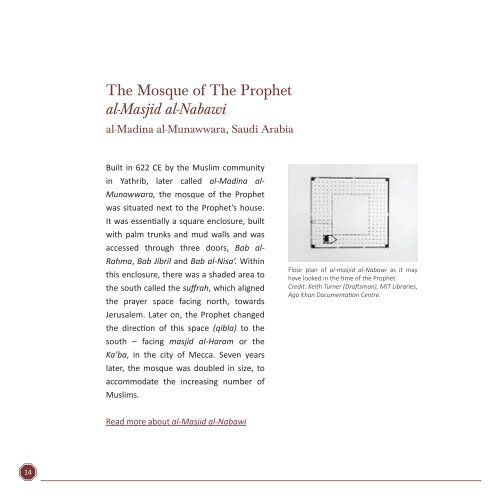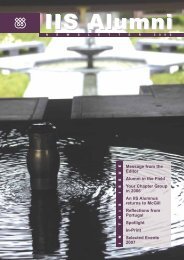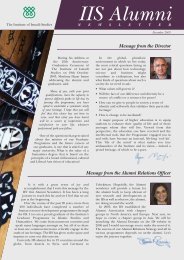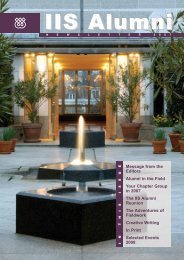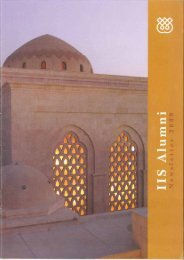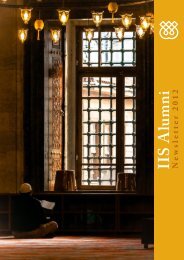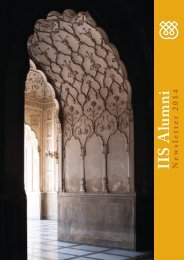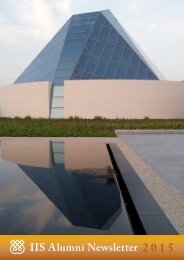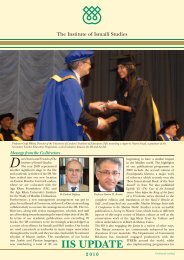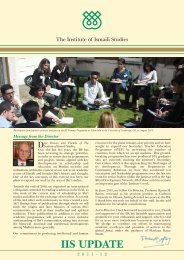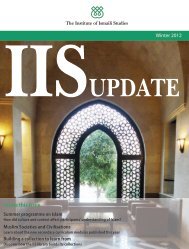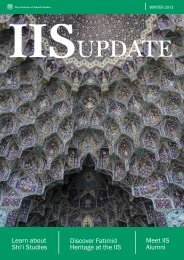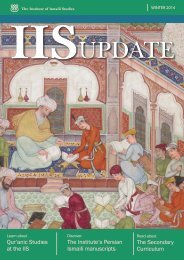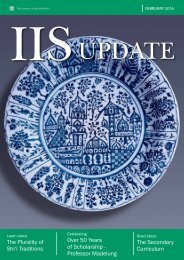You also want an ePaper? Increase the reach of your titles
YUMPU automatically turns print PDFs into web optimized ePapers that Google loves.
The Mosque <strong>of</strong> The Prophet<br />
al-Masjid al-Nabawi<br />
al-Madina al-Munawwara, Saudi Arabia<br />
Built in 622 CE by the <strong>Muslim</strong> community<br />
in Yathrib, later called al-Madina al-<br />
Munawwara, the mosque <strong>of</strong> the Prophet<br />
was situated next to the Prophet’s house.<br />
It was essentially a square enclosure, built<br />
with palm trunks <strong>and</strong> mud walls <strong>and</strong> was<br />
accessed through three doors, Bab al-<br />
Rahma, Bab Jibril <strong>and</strong> Bab al-Nisa’. Within<br />
this enclosure, there was a shaded area to<br />
the south called the suffrah, which aligned<br />
the prayer space facing north, towards<br />
Jerusalem. Later on, the Prophet changed<br />
the direction <strong>of</strong> this space (qibla) to the<br />
south – facing masjid al-Haram or the<br />
Ka’ba, in the city <strong>of</strong> Mecca. Seven years<br />
later, the mosque was doubled in size, to<br />
accommodate the increasing number <strong>of</strong><br />
<strong>Muslim</strong>s.<br />
Floor plan <strong>of</strong> al-masjid al-Nabawi as it may<br />
have looked in the time <strong>of</strong> the Prophet.<br />
Credit: Keith Turner (Draftsman), MIT Libraries,<br />
Aga Khan Documentation Centre.<br />
Read more about al-Masjid al-Nabawi<br />
Courtyard <strong>of</strong> al-Masjid al-Nabawi.<br />
Credit: Adzril, Creative Commons.<br />
14<br />
15


